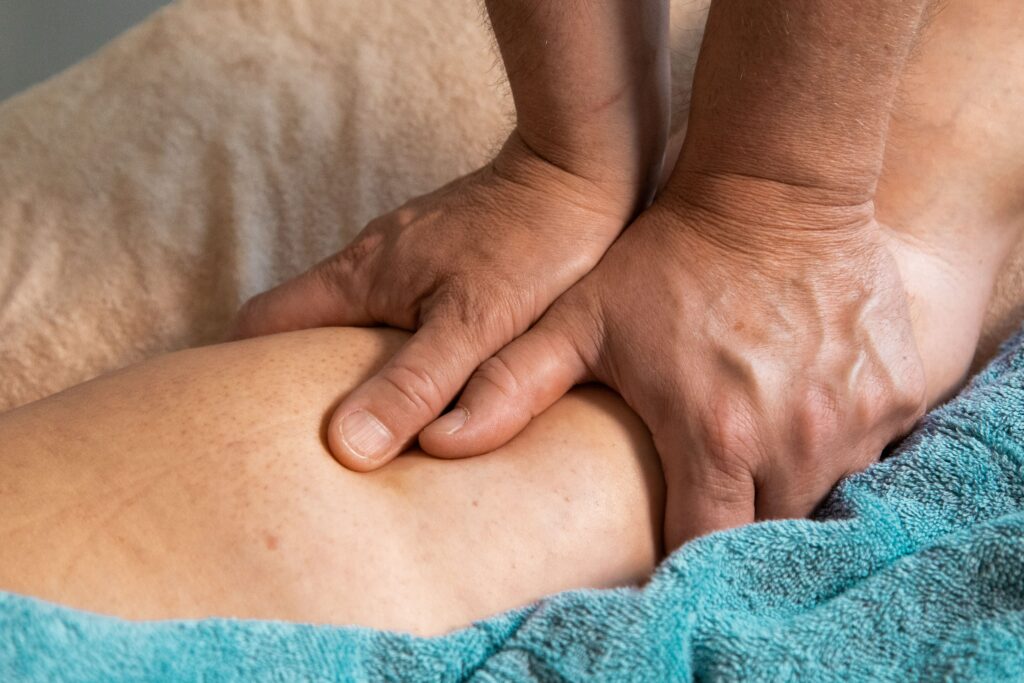Date of the last update: 09.06.2023
Rheumatoid arthritis is an inflammatory disease associated with dysfunction of the immune system. It mainly affects the joints, but also affects other organs. If left untreated, it most often leads to the destruction and deformation of joints and damage to many organs of the human body. Current treatment methods give positive results and help to maintain fitness in most patients.
Table of contents:
- What is rheumatoid arthritis?
- The most important symptoms
- Who is most affected by rheumatoid arthritis?
- How to treat RA?
You can read this article in 4 minutes.
What is rheumatoid arthritis?
Rheumatoid arthritis (RA) is an autoimmune and inflammatory disease with no clear cause. It is characterized by the body’s immune system attacking its own healthy tissues, often causing chronic inflammation in various parts of the body. It leads to painful swelling and stiffness of the affected joints, and as the disease progresses, it can cause deformation and damage.
RA usually affects small joints such as the hands, wrists, knees and feet, although it can also affect larger joints such as the shoulders and hips and other organs such as the lungs, heart and eyes.
The most important symptoms
Symptoms of rheumatoid arthritis vary from person to person and may come and go over time. In the early stages, the disease is insidious. The first symptoms are usually systemic symptoms, similar to those of influenza, including: feeling weak in the afternoon, low temperature, loss of appetite, muscle pain, early morning joint stiffness, weight loss.
The most common symptoms of RA include:
- Joint pain and stiffness – most common in the morning or after periods of inactivity.
- Swelling of the joints – may also be accompanied by warmth to the touch.
- Joint tenderness to pressure – when giving a hand to a sick person, pressure can cause him a lot of pain.
- Decreased mobility in the joint – due to inflammation in the joint, the patient loses the ability to perform a full range of movements.
- Joint deformation – the effect of many years of the disease.
- Fatigue – low effort tolerance, shortness of breath, shortness of breath, chest pain are the main symptoms of the circulatory system.
- Fever – In some cases, RA can cause a low-grade fever, which is often a sign of inflammation in the body.
- Loss of appetite – RA can cause loss of appetite or weight loss, which is often due to the body’s immune response or the side effects of certain medications.
- Anemia – RA patients have been diagnosed with anemia and abnormal amounts of white blood cells (leukocytes).
- Other symptoms – RA can also cause inflammation in other parts of the body, such as the eyes, lungs, or heart. This can lead to complaints such as sore/dry eye, shortness of breath or chest pain.
Who is most affected by rheumatoid arthritis?
It is extremely difficult to pinpoint specific reasons for the development of RA, but for the disease to develop, several factors must occur simultaneously:
- Gender – Women are two to three times more likely to develop the disease than men.
- Disorders of the immune system – the antibodies produced in the body fight and destroy its own tissues.
- Genetic factors – having a family member with RA or another autoimmune disease may increase the risk of developing this disease, for example, a child of a parent diagnosed with RA is 2-5 times more likely to develop the disease.
- Smoking cigarettes – smokers increase the risk of getting sick, and additionally RA has a more severe course.
- Obesity – Obese people are more likely to get sick.
- Infections – some pathogens / microbes are responsible for the development of the inflammatory process in the joints.
How to treat RA?

There is no cure for RA, but various treatments are available that can help manage symptoms and slow the progression of the disease. The goal of treatment is to modify the course of the disease and prolong the period of remission with medication. They will help maintain the normal functioning of the patient on a daily basis by alleviating symptoms and inhibiting joint degeneration. It’s important to start treating your arthritis as soon as possible. Thanks to this, we increase the chances of maintaining physical fitness for longer.
In addition to pharmacotherapy, the patient should also be covered by a rehabilitation or physiotherapeutic plan and psychological support. In some cases, surgical intervention may also be needed.
Check out also: Kinesiotherapy: what is it? How to become a kinesiotherapist?
According to current medical knowledge, RA is a disease that cannot be prevented, but it is very important to detect it as soon as possible and implement special treatment. It will help people with RA manage their symptoms better and lead a fulfilling and active life.
Sources:
- Smolen J.S., Landewé R., Breedveld F.C. i wsp. EULAR recommendations for the management of rheumatoid arthritis with synthetic and biological disease-modifying antirheumatic drugs: 2013 update. Ann Rheum Dis 2014; 73: 492–509.
- Aletaha D., Neogi T., Silman A.J. i wsp. 2010 rheumatoid arthritis classification criteria: an American College of Rheumatology/European League Against Rheumatism collaborative initiative. Arthritis Rheum 2010; 62: 2569–2581.
- Obowiązujący w Polsce Program Terapeutyczny leczenia RZS (08.2014) – obwieszczenie Ministra Zdrowia.
- van Assen S., Agmon-Levin N., Elkayam O. i wsp. EULAR recommendations for vaccination in adult patients with autoimmune inflammatory rheumatic diseases. Ann Rheum Dis 2011 Mar;70 (3): 414–422.
- Smith i inni (2021). Rheumatoid arthritis is a preventable disease: 11 ways to reduce your patients’ risk. Internal Medicine Journal.

